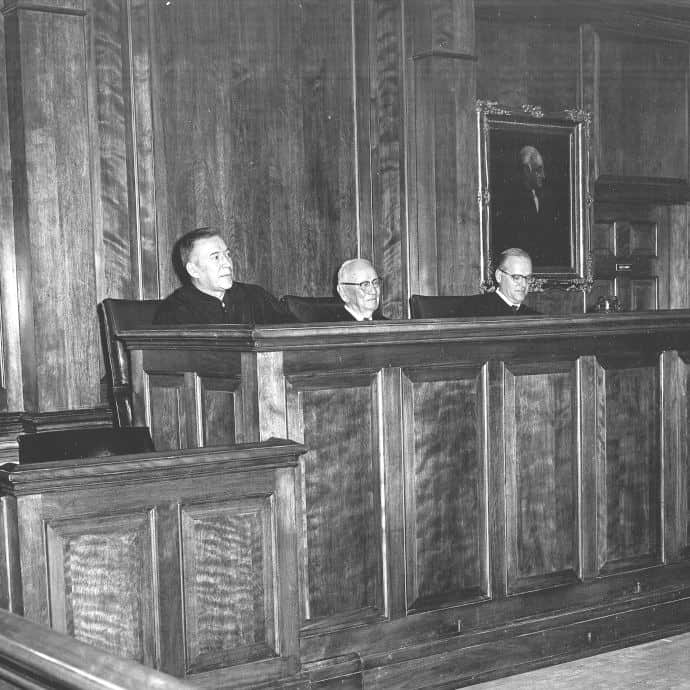In the landmark hearing of the Oscar Pistorius’s trial who was sentenced for murdering his girlfriend, Pistorius on the request of his lawyer removed his prosthetic legs and walked across the courtroom. With his head bowed down, he walked unstably until someone held onto him. The trial was televised in South Africa. His lawyer after the completion of the walk said: “Let’s look at who is the person.” This demonstration of an undisputed fact reinforced what we already knew about Oscar Pistorius, that he is a disabled man. Yet, this visual was critical as it stripped Pistorius of his Olympic athlete status to a defenceless, vulnerable disabled man who shot his girlfriend behind the toilet door fearing it was a burglar. The demonstration of his disability was a conscious decision by his lawyer to make us more empathetic towards the situation Pistorius may have found himself on the night he shot his girlfriend. We do not necessarily experience the precise fear Pistorius may have felt when he shot through the door, but we do see him as a vulnerable subject. What if the fact that is disputed is a perceptual experience that can only be known to the person who experienced it? For instance, can we experience the fear that compelled Oscar Pistorius to pull the trigger and shoot? We understand the fear, but may not be able to experience it precisely since we have no access to the sensory experiences of what Pistorius experienced or felt in that moment before he pulled the trigger.
What if digital technology was used to create a simulation so we can experience the subjective experience of Pistorius at that moment? Would it impact his personal testimony?
In Experiencing Other Minds In the Courtroom Neal Feigenson studies the use of digital technologies in re-creating simulations based on litigants’ subjective experiences for evidentiary purposes in the courtroom. He closely follows five court cases to explore and demonstrate how digital simulations are used, created and presented as evidentiary exhibit in the courtroom. Digital simulations in injury cases recreate the subjective experiences of an injured plaintiff that can help us experience what would have been otherwise inaccessible to us, Feigenson argues. This is especially crucial in cases where the personal testimony of a plaintiff claiming injury, pain and suffering can be only attested by them. Feigenson shows how digital simulations work as rhetorical tools, and questions whether videos or photos that claim to recreate a person’s subjective reality should be admitted as evidence in courtrooms and what is the impact of simulations on decision making that allows jurors into ‘the litigant’s head’.

Digital simulations make sensorial experiences that are personal knowledge or subjective experience of an individual accessible to others. In the cases that Feigenson writes about it means making “how things look or sound to the litigant” (pp. 7) visible or audible to the judge. How we know is unique to us (Hastrup 2004). To paraphrase Kirsten Hastrup (2004: 460), “knowing is a matter of perspective; there is no knowledge without someone who knows in a particular way.” So, what kind of knowledge do simulations offer of litigants’ sensations? Can they authentically do so? Feigenson responds to these philosophical, phenomenological and moral questions by detailing how the arguments and simulations produced as evidentiary exhibits unfold in the courtroom.
Feigenson finds the evidentiary value of these digital simulations is rarely assessed in courtrooms. Yet, the simulations have ramifications on how cases are decided.
In Devadas v. Niksarli case on a botched-up LASIK surgery, Photoshopped pictures of what the world now looks like to the plaintiff after the LASIK surgery were provided in evidence production in the courtroom to convince the juror of the impaired vision. This entailed taking ordinary photos of a pharmaceutical shelf with an auto-focus camera that were adjusted for blurring, doubling, and starbursts that were added to night time photos in order to show what ‘the litigant sees’. Devadas confirmed that this is ‘what he saw.’ The photo simulations were created with the help of a visual consultant and thereafter an ophthalmological witness testified that it was a fair and accurate depiction of what the plaintiff saw. Can these photographs be considered to have probative value (that is, does it establish a fact) or are they merely illustrative? The evidentiary value of the altered photographs or its admissibility as evidence are not questioned in the courtroom.
In Jansson v. J.D.O.R.A.P, Inc. a tinnitus hearing case, a wheel explosion resulted in a permanent hearing loss in the litigant’s left ear, tinnitus in both ears, loss of high-frequency in both ears and a reduced sound tolerance. With the help of an audiologist, sound files for tinnitus (a loud buzzing sound) were created and made available to jurors through headphones. This was followed by Jansson’s testimony where he described his tinnitus and its effects on his work and his life. Feigenson takes us through the process of how sound files were created and how jurors responded on hearing the sound with the question “how could anyone live with that?”

Hearing the digitally simulated buzzing sound meant jurors had access to what Jansson hears. In a verbal testimony “extremely loud” or “blurry” would be left to a judge’s imaginations and testimonial descriptions by plaintiffs describing their impairments or their injury risk failing to provide a precise idea of the intensity of the impairments. Feigenson suggests that this simulation gave the jurors “a more profound sense of knowing what Dennis Jansson‘s auditory sensations were like because it made his subjectivity present for them” (pp. 97). The simulations therefore establish plaintiffs’ subjective experiences as fact (pp. 128), offering a certain kind of epistemological knowledge in injury cases that would otherwise be unavailable.
In contrast to verbal testimony, while simulations lend a subjective experience of a scientific certainty there is a danger in relying on simulations to recreate subjective experiences, especially in a criminal case. In State v. Murtha animation was used to recreate events from the point-of-view of the police officer that shot a suspect fleeing in a stolen car because he thought it was going to hit him. The use of animation to depict what the police officer believed he saw runs the risk of being assumed as ‘what actually happened’ thus misconstruing illustrative evidence to be independent proof, Feigenson critically observes. It also is assumed to be an ‘alternative truth’ and rebuttal of the ‘fact’ that the suspect’s car actually pulled back and sped away as shown in the dashboard camera recording from another police cruiser, as opposed to approaching the said police officer.
Digital simulations are not accurate translations of perceptual worlds of the plaintiffs.
Yet, as Feigenson demonstrates, simulations do reduce the distance between jurors and plaintiffs. Simulations make certain perceptual experiences vividly present and in doing so they amplify the sensorial experience, thus prompting more sympathy than a verbal testimony may have achieved. It causes what Feigenson calls ‘a similarity bias’ where we are more sympathetic towards someone who is more like us. The role of rhetoric is similarly to prompt an emotional response from the judge. Senses are notoriously difficult to translate or convey, and Feigenson’s book underscores the impossibility of the precise capturing or translation of senses.
 Feigenson’s book redirects our attention to the nature of evidence itself that relies on what the witness saw, heard, felt, and how this is translated to withstand evidentiary requirements and legal questioning so as to present itself as ‘truth’. Given the paucity of literature that looks at evidence critically, the book offers a nondoctrinal look at how facts are determined in a courtroom and the role digital technologies can play in supplementing plaintiffs’ testimony and the legal narrative in a trial. Facts are after all what are at issue in a case. The manner in which law controls the senses and how the human perceptual experience is critical in witnesses’ testimony to establish legal facts has only recently received scholarly attention (Hamilton et al. 2016 ), and Feigenson’s book is an important reminder of why we need to pay attention to the senses.
Feigenson’s book redirects our attention to the nature of evidence itself that relies on what the witness saw, heard, felt, and how this is translated to withstand evidentiary requirements and legal questioning so as to present itself as ‘truth’. Given the paucity of literature that looks at evidence critically, the book offers a nondoctrinal look at how facts are determined in a courtroom and the role digital technologies can play in supplementing plaintiffs’ testimony and the legal narrative in a trial. Facts are after all what are at issue in a case. The manner in which law controls the senses and how the human perceptual experience is critical in witnesses’ testimony to establish legal facts has only recently received scholarly attention (Hamilton et al. 2016 ), and Feigenson’s book is an important reminder of why we need to pay attention to the senses.
References:
Hamilton, Sheryl, Diana Majury, Dawn Moore, Neil Sargent, and Christiane Wilke (Law teacher). 2016. Sensing Law. Taylor & Francis.
Hastrup, Kirsten. 2004. ‘Getting It Right Knowledge and Evidence in Anthropology’. Anthropological Theory 4 (4):455–472.
Feigenson, Neal. 2017. Experiencing Other Minds in the Courtroom. Chicago: The University of Chicago Press. 240 pp. Cloth $45.00. ISBN: 9780226413730.
**********
Featured image (cropped) by The Wolf Law Library (flickr.com, CC BY-NC-ND 2.0)



